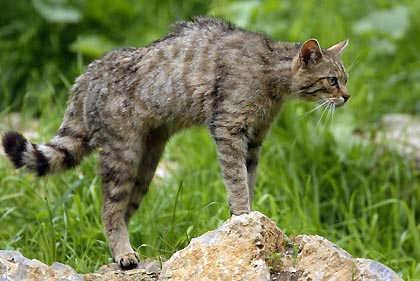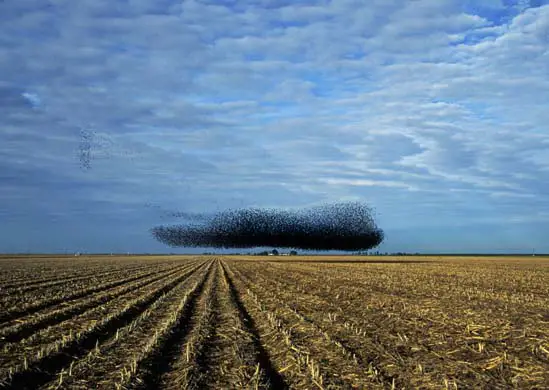(A black-faced spoonbill, Platalea minor. Image courtesy of HKAEX2010.)
One such species is the black-faced spoonbill (Platalea minor), an endangered waterbird that lives along the coast of eastern Asia. In Macao, spoonbills overwinter in an area that is increasingly being developed for tourism. Although the birds can retreat to the Taipa-Coloane Wetland Reserve, which is surrounded by protective fencing and prohibits human visitors, the construction of nearby roads could rob the birds of their peace and quiet--literally. Given that anthropogenic noise is thought to have a number of negative impacts on both individuals and entire populations, these potential developments could eventually drive spoonbills from Macao and even threaten the viability of the birds' dwindling global population.
A group of Chinese researchers recently set out to investigate this possibility; specifically, they were interested in examining current levels of noise pollution and using modeling techniques to predict how the habitat might be altered by future increases in acoustic disturbance. To do this, they conducted bird surveys in the two ecological zones contained within the reserve: an artificial lagoon and a tidal flat/mangrove swamp. The surveys were conducted 4 days a month during each month of the wintering season (October-April), over a period of two years. In addition to measuring the winter abundance of the birds (calculated here as the maximum number of individuals observed each month), the researchers also conducted behavioral observations in order to see how the birds spent their time--and how their behaviors were altered by specific human disturbance events.
In order to relate these avian parameters to noise regimes, the researchers collected acoustic recordings around the perimeter of the first zone (which has a rectangular shape) and along the edge of the second zone (which runs straight along the waterfront). The recordings were collected from 8 AM until 6 PM on working days, and so should reflect the most intense noise to which the spoonbills are regularly exposed. In order to better understand which types of noise are most alarming to the birds, the researchers examined each particular disturbance event (identified during the behavioral observations) in order to determine whether noises were generated by small cars, medium cars, heavy trucks, or motorcycles.
(Macao. Image courtesy of Abterra.)
GIS techniques were employed to investigate how the spoonbills' roosting locations related to spatial variations in noise levels. Because the researchers couldn't actually enter the reserve in order to measure noise levels next to the birds, they had to run simulations in which a variety of habitat parameters (e.g., vehicle types, average speed, traffic volume, road properties) were used to predict the actual traffic noise experienced by the birds. Predicted noise values were used to create noise distribution maps that were overlaid with maps showing where the birds actually roost.
Over the course of the study (2007-2009), the number of spoonbills typically peaked early in the year (January-February), when a maximum of 52 individuals could be seen at any one time. The birds clearly preferred the lagoon zone rather than the shore/mangrove zone, though the two zones had fairly similar average noise levels--46.5 dB(A) for the lagoon and 45.4 dB(A) for the waterfront. However, a greater proportion of the second zone contained areas where ambient noise levels were below 47 dB(A). This appeared to be a significant threshold for the spoonbills, which aggregated in these quieter areas and avoided those that exceeded 47 dB(A). Interestingly, this same apparent threshold has also been found for grassland species in the Netherlands, suggesting that the avian hearing apparatus may predispose many species to show similar responses to noise disturbance.
Spoonbills in both sections of the reserve had similar behavioral time budgets, and the researchers did not notice any significant correlations between particular spoonbill behaviors and ambient noise levels. However, they did notice that the birds were generally most active at 9 AM, which was when traffic noise was loudest. Thus, any changes to the disturbance regime that increase the amount of noise at this time of day might be particularly harmful to the birds.
The behavioral observations also revealed that spoonbills were fairly sensitive to noise events. Nearly half of their disturbance-related behaviors were associated with traffic; most of the time, the birds engaged in alarm behaviors or increased vigilance, but a flush response was observed in one spoonbill. All of these activities are known to reduce the amount of time that birds spend foraging, which, in turn, can decrease energy intake and prevent the birds from putting on adequate fat for migrating and/or breeding. An ambulance siren and a medium vehicle were responsible for two of the disturbances; the rest were caused by large trucks. While these events were, on average, approximately 82 dB(A), the loudest was a whopping 86 dB(A). Not surprisingly, the researchers noted significant relationships between noise intensity and both type and duration of spoonbill reaction.
(A flock of black-faced spoonbills foraging along the waterfront in Macao. Image courtesy of People's Daily Online.)
In one respect, these results are encouraging: Although the reserve contained areas where the ambient noise levels were fairly high, the spoonbills were able to find the quieter sections and utilize these for their overwintering activities. However, the researchers do worry about the future of the birds in Macao. They measured particularly high levels of background noise on the road separating the two zones of the reserve, which means that increasing levels of traffic could negatively impact both areas where the spoonbills are currently found. Even if noise levels remain constant, the researchers worry about the potential cumulative effects of noise from both this and other roads near the reserve; chronic noise disturbance may have implications that could not be measured in this short-term study.
Previous studies have found that traffic noise can permeate habitats over 1 km from the road, which means that the addition of more roads and/or traffic could quickly reduce the proportion of the Macao reserve that is suitable for black-faced spoonbills. It is unclear how this might impact the global population, but, given how few of these birds are left, it would be better not to perform such an experiment. In order to maintain the current quality of the reserve, the authors suggest that the government should restrict the flow of traffic--especially heavy trucks--on the roads near the spoonbill habitat. They also noted that the fencing around the lagoon zone was good for keeping out humans but not noise. Erection of a sound barrier around the perimeter might, therefore, be one way of protecting spoonbills (and other reserve inhabitants) from acoustic pollution.
---
Zhang, M., Cheong, K., Leong, K., and Zou, F. 2012. Effect of traffic noise on black-faced spoonbills in the Taipa-Coloane Wetland Reserve, Macao. Wildlife Research 39(7):603-610.



















